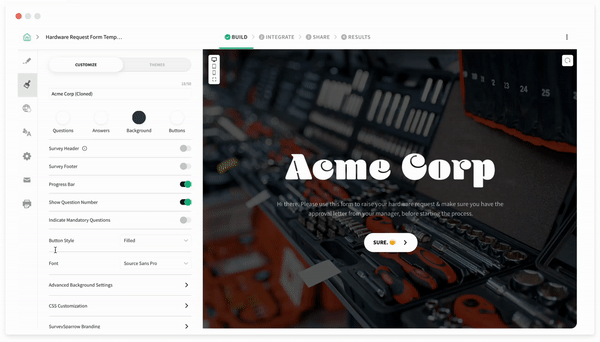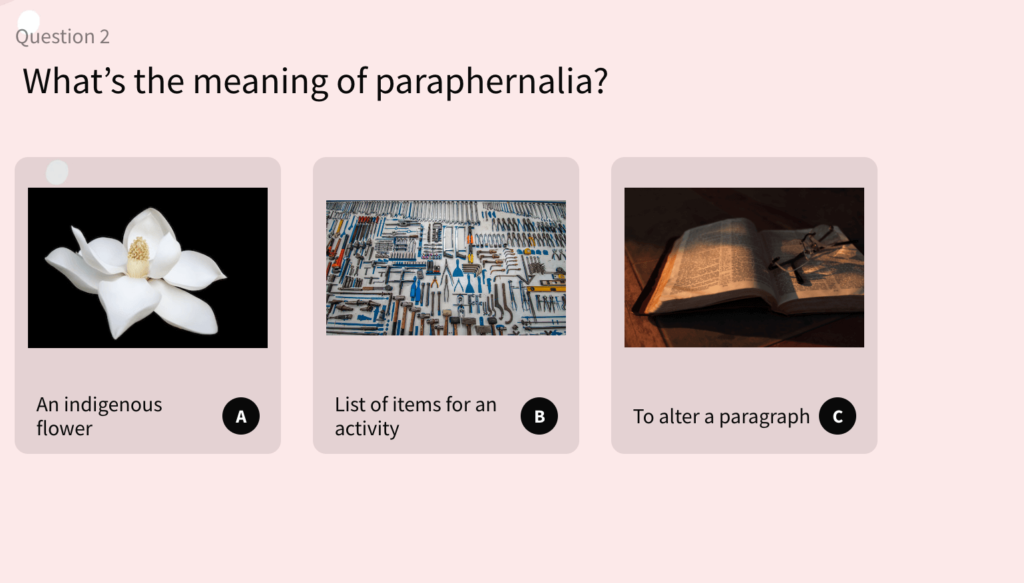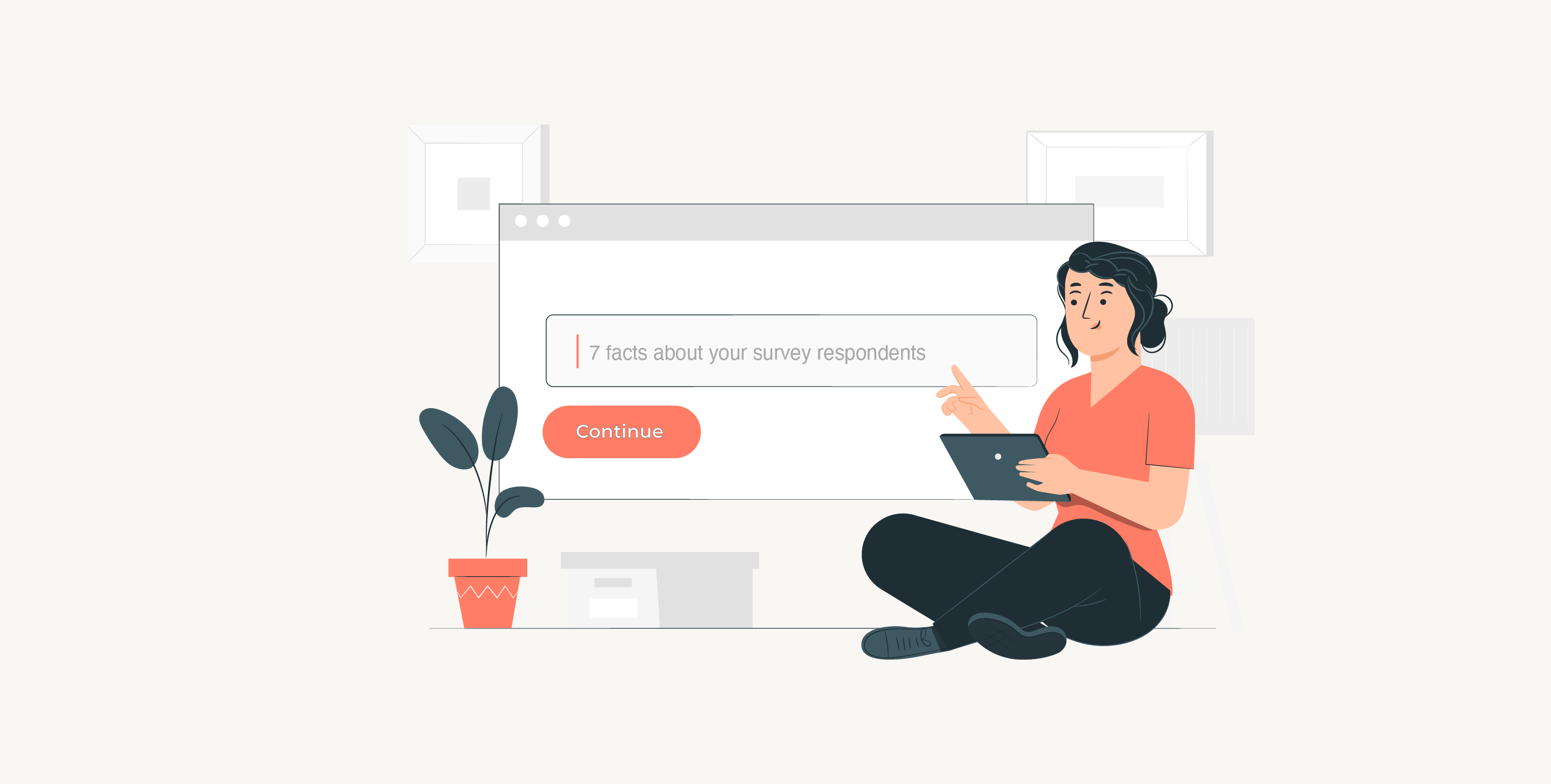Survey & Feedback
Conversational Feedback: Your Guide to Conversational Surveys
Article written by Parvathi Vijayamohan
Content marketer at SurveySparrow.
9 min read
19 September 2025

“Conversational feedback.” It sounds like an oxymoron, doesn’t it? Like “small crowd” or “open secret.”
If “feedback” makes you picture long, boring forms with boring questions that take you on a one-way trip to Boretown, this article is for you. In this article, we will:
- Explain what conversational feedback means
- Discuss the six elements of conversational surveys
- Jot down the benefits and challenges of using them
- Learn the best practices for creating them.
What is conversational feedback?
Conversational feedback, or surveys, is a way to collect feedback from customers and employees more naturally.
In other words, conversational surveys collect customer/employee feedback through an informal conversation. Rather than asking them to complete a survey that feels like an interrogation, you can ask them questions as you do in a conversation. This allows people to feel more comfortable and provide honest feedback.
Due to their interactive nature, conversational surveys work well on digital platforms like email, social media, landing pages, and so on. However, a thoughtfully crafted conversational feedback form can be equally effective offline.

The elements of conversational feedback
The six elements of conversational feedback are:
Personality
For conversational feedback to be effective, it’s important to inject some personality into the conversation. Here are a few pointers to follow:
- Think about how you want to present yourself since you represent your company. Consider the tone of voice, how people perceive your brand, and what they expect. Customize and style your surveys for more credibility with CSS white labeling.

- Make sure your chatbots and chat forms have appropriate avatars. Adding photos to the conversation adds a human touch, but illustrated avatars or custom icons add fun as well.
![]()
- If it suits your brand, don’t be afraid to sprinkle some emojis into the conversation. Emojis are a great visual way to convey emotions, are instant cues to the tone of voice, and can make the conversation feel more natural.
According to Adobe’s Emoji Trend Report, 73% of those surveyed believe adding emojis to messages increased that person’s likeability and friendliness quotient.
- Do conversational surveys use GIFs? Yes, absolutely! It is best to use GIFs at the end of a customer conversation when you have resolved their issue. Learn more about how and when to use GIFs on this blog.
Asking questions
One of the essential elements of conversational feedback is asking questions. This allows you to better understand the employee/customer’s needs and wants. But it also allows you to build rapport with the customer.
- Use a mix of survey question types, like image choice, MCQs, open-ended questions, heat maps, etc. This gives more context and color to your data, and becomes a source of richer insights to support your survey goal.
- But it also helps to keep the reader’s interest.

- Ask one question at a time as you would do in a conversation.
- However, don’t go at too leisurely a pace. Stick to asking only the questions that are necessary for your survey goal.
Responsiveness
Another vital element of conversational feedback is responding. This means that you should listen to the customer’s responses and then react accordingly. These actions show that you’re interested in what they have to say and that you’re responsive to their needs.
- Use survey logic when asking questions and responding to answers. This will ensure that the conversation flows smoothly and that you don’t get sidetracked.
- Break up the conversation into choices or paths based on the survey logic. For example, if the question is:
Which are your top three most used features?
- NPS surveys
- CSAT surveys
- Audience panel
- Offline surveys, etc.
The respondent selects three features from the list. Then, based on her choices, she gets a follow-up question:
How satisfied are you with these features?
- If it suits the conversation, include icebreaker questions or messages like this one:

Empathy
Empathizing with the customer is another crucial element of conversational feedback. This means that you should understand how they’re feeling and what they’re going through. Again, this will help you build a better relationship with the customer.
- Build empathy with data. Using tools such as Pendo and SurveySparrow to map the user’s journey and actions can provide rich insights into their behavior and thought processes. You can use these insights to make conversational feedback forms more intuitive and get more responses.
- Use survey logic to respond appropriately when a customer expresses satisfaction or dissatisfaction, such as: “That is great to hear” or “I am very sorry to hear that .”The technique can be applied to rating questions or matrix questions, along with a follow-up question, to understand the customer’s sentiment.
- Update the customer/employee on where they are at in the conversation. You can do this with a progress bar or a simple message like, “One last question: how was your experience at Oceana Hotel?’ Etc.
- If you need feedback of a sensitive nature or a question that requires a little more thought from the person, explain why. People will be more willing to answer once they understand why you need this kind of feedback.
“We will ask you to share details of your age and gender.
This information is important to us as it will be vital to personalizing our patient experience. Do you want to continue?”
Smartness
Thanks to survey logic, each question in a conversational feedback form builds on previous responses, making the whole experience look and feel much more human. But there’s more.
- Conversational feedback is mobile-first. This makes sense because there are 5.34 billion unique mobile phone users today. One thing you are sure to find in all social media, messaging apps, and most websites (aka the places where conversations happen) is the principle of ‘mobile-first.’
- Conversational feedback is multilingual. A 2021 Global Multilingual CX Survey by Unbabel revealed that 68% of customers prefer to speak with brands in their native language. The same report states that the ability to deliver high-quality support in multiple languages will be a major differentiator.
- Voice notes are essential to the smart experience because they let people instantly transcribe survey responses into text. This saves a lot of time and effort for the respondents.
Scalability
A conversational survey form can be scaled to target respondents from multiple audiences. Here’s how:
- Display and skip logic to stay on track according to the user’s responses.
- Custom params to track and filter reactions for specific tags.
- Multiple thank you pages for different respondents based on the conditions that are met – like scores or survey responses.
- Create computations using mathematical formulae like calculating scores.
Benefits & challenges of conversational feedback
The benefits of conversational feedback are:
- It allows you to collect honest feedback.
- Conversational surveys builds rapport with customers.
- They helps you understand customer needs and wants.
- Conversational feedback forms show that you’re responsive to customer needs.
- It creates a more natural conversation flow.
The challenges of conversational feedback are:
- They can be time-consuming.
- There is a risk of going off-topic.
- Good listening skills are a must. While chatbots help automate customer support, human agents still have to sift through the data for insights.
- You need to be able to empathize with the customer while creating the form.
- You need to be able to use logic.
Best practices of conversational feedback
When creating conversational surveys, there are a few best practices to follow based on the elements above:
1. Start with an introduction.
2. Be clear about what you want to achieve with the survey.
3. Ask questions relevant to the customer’s needs and wants.
4. React to the customer’s answers.
5. Empathize with the customer.
6. Use logic when asking questions and responding to answers.
7. Break up the conversation into choices based on logic.
8. End with a ‘Thank you.’
Wrapping Up
Following these best practices will help you create effective conversational surveys that will allow you to collect honest feedback from customers and better understand their needs and wants.
And, before you go, why not take SurveySparrow for a spin? It’s free to try!

Create conversational surveys with SurveySparrow
A personalized walkthrough by our experts. No strings attached!

Create engaging surveys that people actually complete. Try SurveySparrow now!
Parvathi Vijayamohan
Parvathi is a sociologist turned marketer. After 6 years as a copywriter, she pivoted to B2B, diving into growth marketing for SaaS. Now she uses content and conversion optimization to fuel growth - focusing on CX, reputation management and feedback methodology for businesses.
Related Articles

Survey & Feedback
7 Facts About Survey Respondents You Wish You Knew
17 MINUTES
17 June 2021

Survey & Feedback
How AI Can Enhance Consumer Understanding in Market Research
10 MINUTES
31 July 2023

Survey & Feedback
Is Google Forms HIPAA Compliant: Safeguard Patient Data
8 MINUTES
12 March 2024

Survey & Feedback
75+ Sports Survey Questions For All Purposes & Events
16 MINUTES
21 January 2023
